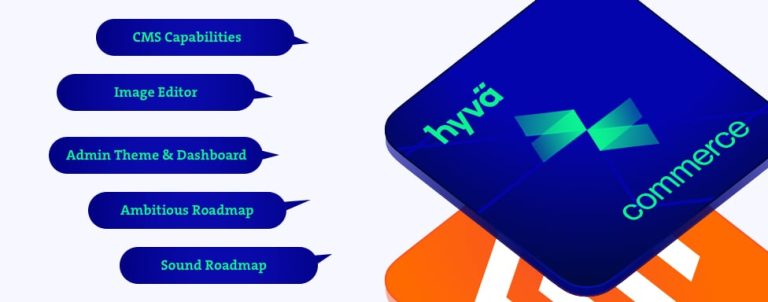A few months ago, I’ve started working at Inchoo as a project manager. This eCommerce company serves many different businesses worldwide through 10-year history and I was keen to know which project I will get first. While waiting, I’ve gotten to know my colleagues, learned about some of the key processes, tools and how to tweak the coffee machine. Initially, I expected I’ll have a clean start with a project, and that the whole process will have a linear learning curve for both me and the client. I was wrong.
When I heard that I will inherit 3 ongoing projects from other PMs, one thing was clear – I’m sure going to need to do a lot of research. While freaking out was not an option, I also did not want to do cramming sessions like the ones in college. So I decided to develop my own system for project takeover and to make this transition easier for the client as well. I’ve created 3 checklists with workflow I tried to follow, upgrading it when something new emerges.
“It is not the strongest of the species that survives, nor the most intelligent that survives. It is the one that is the most adaptable to change.”
What business are you serving?
In my case projects were different types of businesses, from different countries, and have been nurtured at least two years within Inchoo. The last one meant I should be more familiar with all the history my company shares with a specific client.
- Explore the webshop from the user’s perspective, just like any brick-and-mortar store you accidentally walked in. Try to find ‘Mission and vision’ part if it exists and click thoroughly through the categories since the logic behind this part will become your main expertise. Click everywhere. If you’re not born with it, at least try to develop your personal attention to details.
- Write down all impressions, because you’ll be returning to those notes in weeks ahead. I’m talking here about good things as well, not just the things you think will be good to optimize.
- Read through collaboration tool you are using with the client. Start from the beginning. This will be pretty laborious work, especially when are years in question, but as mentioned before, write down the biggest features and customizations your predecessors have managed. The smaller things you don’t have to remember, only to understand.
- What about the competition? When checking other web shops that operate in a specific niche like your client, you may see interesting approaches. But most importantly, try to understand how your client’s business differentiates from the competition, and build on that strength even more!
- Who is the buyer persona? You don’t want to be caught in a web of cliches and assumptions, just take your time and invest it in deep dive in customers data pool you already have. Write down anything useful, any pattern that describes typical customer and their behavior.
Who is the client?
Since the project manager is established as the main communication point between two companies, the chance is I’ll be in touch with different client representatives. That means different personalities as well, and your goal here is to adapt quickly to the following:
- Read through previous project communication and understand who is who in client’s organization. Are you corresponding with a few people and what is their business role in the company? Internal hierarchy or decision-making chain… Everything matters!
- What “style” they’re having in communication and what are their backgrounds? While this can be subjective to a certain point, you can at least try to evaluate according to the types of questions they have asked.
- What are the goals they already had in the previous chapter with your company? Are they task-driven, time-sensitive, budget-sensitive or maybe they gave you the steering wheel for most features without too many questions asked?
- How frequent are they with asking questions or giving tasks? That part is important for your personal organization and time planning since you have to balance several projects simultaneously, without unnecessary waiting and prolongation. It goes from both sides, and maybe you need to give more pieces of information, or the client is not responsive. Keep in mind that your goal is to get in sync with the client, not strictly by yours or their terms but in terms of maximum efficiency and speed.
- No matter what were the meeting habits with a client in the past, offer them a video conference for your very first meeting. Sure, they maybe don’t do that regularly, or they think it’s a waste of time – never mind. It’s your proposition to get to know them better, in real time and perhaps in a slightly casual atmosphere. It can build up a connection with the client more than you believe and personally I think there have to be less formal walls between both parties. After all, Inchoo has a credo of an agency that wants to be a merchant’s best friend and I strongly believe this can be a winning strategy if we upgrade our relationship on a regular basis with trust and more human-like behavior.
Who is on your team?
Here, at Inchoo, are several teams that are serving different businesses with their expertise. When taking over the project you sure need to see who is already added to the collaboration portal and schedule the meeting with all members.
- Who is working on what part of the project? Use the information you already gathered to ask team members and former project manager more specific questions about past activities.
- Again, it’s not just about the code and final product, or feature or whatever, it’s about personalities and knowledge base of colleagues that have already been working on a project and their engagement. What is their background in a certain field of work, what style are they having in terms of “leave-me-alone-while-I’m-coding” to “come-to-my-desk-if-you-want-to-witness-deployment-process”. While new in this company, I’m amazed at how great and versatile people work here, so let’s say that adaptation with colleagues, from my perspective, went great.
- Don’t inherit other’s people opinion on…well, other people. Meaning, team members, and the client can have own opinion on what is wrong, who is to blame when something’s wrong, what were the right decisions etc. But try to be open-minded here and sometimes filter negativity if arises. The goal here is to have the big picture in terms of facts and responsibilities.
- After meeting with all team members, try to arrange 1 on 1 meetings afterward. For example, a back-end developer that has implemented customization within some extension. Prepare for that session with specific questions because you don’t want to waste anyone’s time and to be sure you understand what is the objective of the meeting.
- Ask questions. Maybe collaboration portal doesn’t have all the instructions and information that are beneficial to the project, but in most cases, team members have. Ask for additional backups, like emails or any documents that are relevant to any past event.
And finally, who are you?
Yes, if you are that link that connects two worlds, it’s time to reflect on yourself too. I see this as a mixture of your own words, thoughts, and achievements that will follow after project takeover. This is not the part of a checklist, just a personal re-evaluation and continuous learning process.

For the client, you are a new person that has an important role, and he wants to be sure that everything is taken care of. Project manager change in the middle of the project can be perceived as an additional effort for the client – explanations, instructions, time – but your number one task is to convince them that this was already done beforehand.
Before the first interaction with the client, try to be prepared. Since who you are and what is your background will be presented to them, better have a little draft of what are your career milestones, references to other projects and show somehow that you have done serious research on the client’s business.
This is not just a project takeover; it’s taking the lead as well, so you have to show that you are making future plans and searching for improvements, not just applying quick fixes and cleaning a backlog. They are steering the company (or at least the eCommerce channel if it’s a larger organization) and it’s sometimes difficult to know the next steps from their management, but be vocal to share your personal expertise and viewpoints.
Of course, you want to bring in the value for their business, to move things in a better direction, but after you entered the project, the client has to feel that they are not just a part of the revenue stream in your agency. They are much more than this and the main role of project manager is to build a firm and loyal relationship with a client that will last, no matter if you joined a project in the middle of it.



